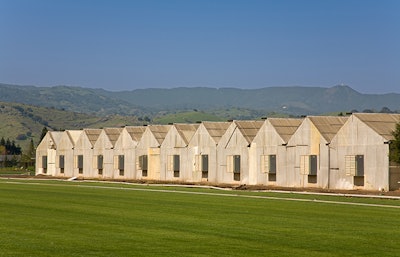
A good broiler house cleanout program is central to any biosecurity program, helping to minimize the spread of deadly pathogens between flocks.
“Performing a house cleanout requires multiple steps that are very detailed,” Bret Rings, Veterinarian at Cobb-Vantress, said. “We clean and disinfect to not only prevent avian influenza, but also Salmonella, mycoplasma and other disease-causing agents that are potentially in that house.”
Rings shared his recommendations for a successful poultry house cleanout during an April 8 webinar from the U.S. Poultry & Egg Association (USPOULTRY) on biosecurity and preventing avian influenza.
Know who is responsible
When it comes to a poultry house cleanout, the roles of all stakeholders need to be identified before anything else occurs. This rule applies to everyone from the farm owner to the service tech to the wash crew.
“I always say that assumptions get me in trouble. If you assume someone is doing something, chances are they are probably not and you’ll end up paying for them in some way,” Rings explained.
Prepare ahead of time
There’s more to a poultry house cleanout than just the cleaning and disinfection process. Prepare houses by scheduling for an empty feed bin, make sure augers are empty and remove feed track corner and cleanout covers.
Empty houses also require a dry cleaning to remove all dirt and organic material. The final step before cleaning and disinfection is to seal the house, so that rats, mice and other vermin cannot enter.
Cleaning and washing
Rings recommends that a good soap be used during the cleaning and washing process, although he noted that some houses may require a disinfectant at prescribed mixtures if the goal is to prevent a known disease.
Houses should be cleaned from top to bottom, with special care given to reach all areas.
Preparing for disinfection
Prior to disinfection, a visual inspection should be performed. If any organic matter is still visible, the house needs to be rewashed because you can’t disinfect organic matter.
When it comes to disinfection, “we like to use foam,” Rings said. Foam offers several benefits. It stays where it is sprayed and provides a good visual of which areas have been disinfected.
After disinfection, the poultry house is considered clean.
Sampling and pathogen testing
Sampling ensures that the cleaning and disinfection process was effective so it’s crucial that all quality assurance and lab guidelines are followed. It’s important to collect samples from a range of areas inside the house, from corners to flooring to feed troughs.


















